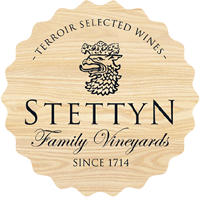The Ultimate Guide To Wine & Cheese Pairing
Pairing wine and cheese may seem like a daunting task, but when you find that perfect match it can be so worthwhile.
To help, we’ve put together a cheese and wine pairing guide. We’ll cover everything you need to know about pairing wine and cheese from why wine and cheese make such a great match to how to pair wines and cheeses and how to put together a wine and cheese pairing.
Whether you are looking for wines to pair with cheeses, or cheeses to pair with wines, read on to find out more!

Why do cheese and wine go together?
Understanding why cheese and wine pair well is actually rather simple. Cheese, which is typically quite high in fat, coats the mouth and taste buds with its richness. Wine on the other hand is characteristically more acidic – and sometimes sweet – which cuts through the rich and creamy layer in the mouth.
The combination of rich cheese and acidic wine can unlock different and fuller flavours on the palate as well as create a wonderful mouthfeel (the way food feels in the mouth). Cheese can even help reduce the duration of astringency of red wines, and heighten the taste of white wine.
Food scientists have found that consuming cheese while drinking wine can actually improve the experience you get from the wine itself as foods that are on opposite ends of the taste spectrum seem to create a very pleasant taste sensation and register as a good match in the brain.
A more romantic reason for why cheese and wine go well together is that winemaking and cheesemaking have co-existed, side-by-side throughout history. Both often take years of aging to reach maturation and optimum flavor, both require careful tending by artisan producers, and both are often created in similar terroir, making the pairing of cheese and wine a natural pairing.
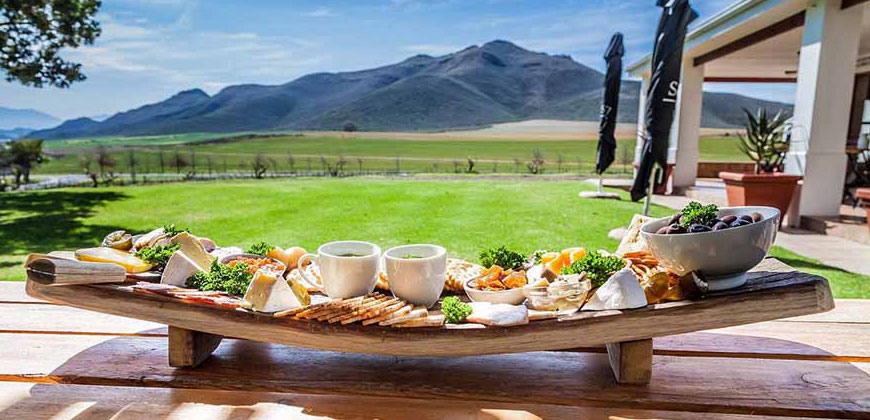
How do you pair wine and cheese?
There are a few basic rules when it comes to choosing wines to pair with cheeses.
1. Try to pair like with like.
A heavy wine will completely overpower a milder cheese just as a pungent cheese will overpower a light wine. Pair a lighter wine with a milder cheese, and a sweet or heavy wine with a bolder, more mature flavoured cheese.
2. Beware of highly tannic wines.
A heavy wine will completely Tannins are natural compounds in plants that create a bitter taste or drying sensation on the tongue. They’re why over-brewed tea and high-tannin red wines make your mouth feel drier and rougher after a sip. Tannins in red wines cause the worst clashes when it comes to cheese, so pair with caution.
3. Opposite cheese and wine tastes attract.
Think about some classic taste combinations that just work – sweet and spicy (chocolate and chili), salty and sweet (pretzel and chocolate). We can apply this principle of pairing opposite tastes to wine and cheese pairing. Think of pairing a fresh and tangy white wine with a buttery and fresh cheese or a sweet dessert wine with a salty hard cheese.
4. Wine and cheese that grow together go together.
It can be a fun and educational experience to try and match wine and cheese from the same areas. Often these wines and cheese are produced together resulting in some amazingly matched cheeses and wines.

Which cheese tastes best with wine?
The long and the short answer is almost all of them! You can find a wine that goes well with almost any type of cheese.
We’ve put together a list of the different types of cheese and a suggestion of wine pairings, but feel free to experiment.

Hard cheeses:
Hard cheeses are typically quite sharp or salty in taste and have usually been aged which results in the loss of moisture causing them to harden.
Examples of hard cheeses: Cheddar, Gouda, Comté, Emmental, Grana Padano, Gruyère, Parmigiano-Reggiano
Wine pairings: Chardonnay, Sauvignon Blanc, Cabernet Sauvignon, Pinot Noir, Pinotage, Shiraz
Soft cheeses:
Soft cheeses are milder in flavour than hard cheeses and often spreadable. These cheeses are not aged for any specific time and are usually mild in flavour with slight saltiness or tanginess.
Soft cheese examples: Ricotta, Feta, Brie, Cream cheese, Mozzarella, Cottage cheese, Camembert
Wine pairings: Merlot, Chardonnay, Sauvignon blanc, sparkling wine, Chenin Blanc, Rose
Blue cheeses:
Blue cheeses are rather pungent cheeses with a blue tinge. Blue cheese is made with cultures of Penicillin mould which create the characteristic blue-green veins seen in blue cheese.
Blue cheese examples: Gorgonzola, Stilton, Cambozola
Wine pairings: Chardonnay, Merlot, Rose.
Washed rind cheeses:
Washed rind cheeses are cheeses that are washed with a brine and bacteria or mold solution while ripening. This creates a soft and creamy centre with a distinct rind. These cheeses are often quite pungent and tend to have a strong flavour.
Washed rind cheese examples: Munster, Taleggio, Vacherin, Stinking Bishop
Wine pairings: Pinot Noir, Chenin Blanc, dessert wines, sherry
Which white wines pair with which cheeses?
In general, white wines pair very well with cheese. They are much lighter than red wines, have lower tannins, and can be very fruity which all enhance the pairing of cheese and white wine.
That said, red wines can also pair well with cheese, especially bolder flavoured cheeses. We’ve put together a list of white wines and cheeses to pair with them.
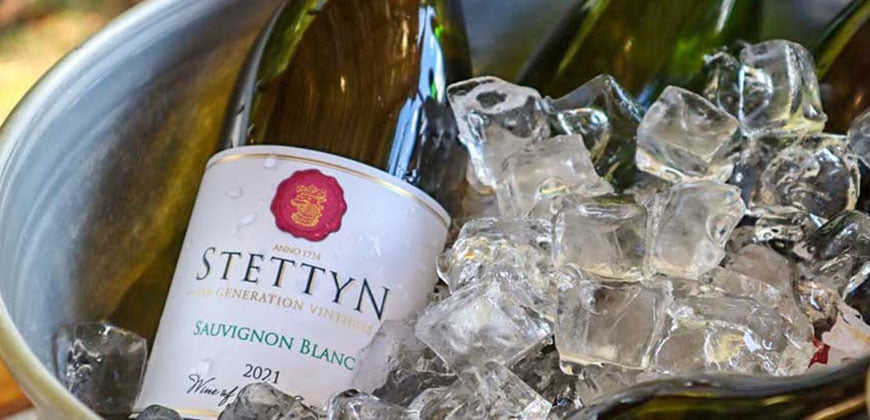
What cheese pairs with Sparkling wine
Sparkling wines are great for pairing with rich cheese as the high acid and pleasantly stinging bubbles cut through the richness. You can try pairing a sparkling wine with a bloomy cheese like Brie or a hard cheese like a Pecorino.
What cheese pairs with Sauvignon Blanc
Sauvignon Blanc is a dry, light and fruity or green white wine that pairs well with a rich, fresh cheese such as a goat’s cheese or a mild Cheddar cheese. You could also try pairing Sauvignon Blanc with Havarti, Monterey Jack, Muenster, or Parmesan.
What cheese pairs with Chenin Blanc
The high acidity and fruity notes of a dry Chenin Blanc pairs well with fresh cheeses like Chèvre or bloomy cheeses like Brie and Camembert. You could also try pairing Chenin Blanc with Gruyere, cream cheese, and Cheddar.
What cheese pairs with Chardonnay
A light, dry, unwooded Chardonnay will pair well with a bloomy cheese like a Brie or Camembert. A richer, wooded chardonnay will pair beautifully with semi-hard cheeses like Cheddar, Gouda, Emmental, Boerenkaas, Provolone, Edam and Gruyere.
What cheese pairs with Rosé
Rose can be a great choice for a cheese and wine pairing as you get some of the great flavours of red and white wines without the tannins making this wine very versatile. Rose pairs with fresh cheeses like Burrata, salty cheese like Feta or Halloumi. You can also try semi hard cheeses like Asiago or a mild blue cheese like Cambozola.
Which red wines pair with which cheeses?
Red wine and cheese pairing allows you to go a little bit more bold in your cheese flavours. The stronger flavours of red wine will hold their own against a wider range of cheeses.
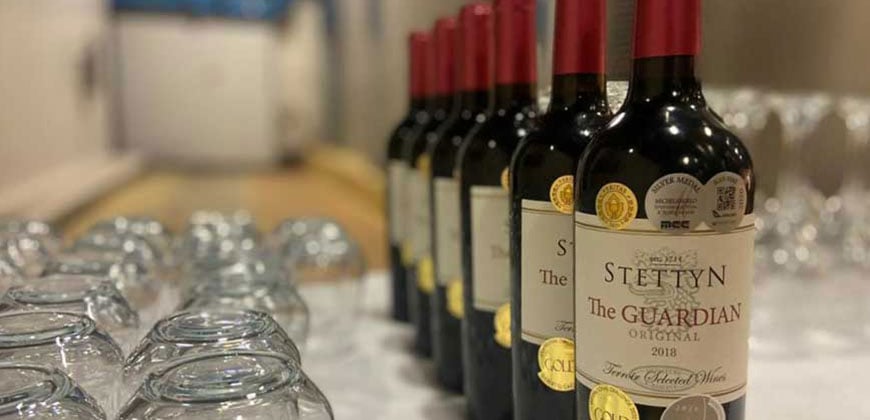
What cheese pairs with Cabernet Sauvignon
A bold, tannic Cabernet Sauvignon needs to be paired with an equally bold flavoured cheese such as an aged Cheddar. You can also opt for another hard cheese such as Pecorino, Parmigiano-Reggiano or Grana-Padano.
What cheese pairs with Shiraz
The bold and spicy nature of a Shiraz also requires a bold cheese and pairs well with something salty. You can try pairing Shiraz with Halloumi, Gouda, Asiago, Gruyere, or hard cheeses such as Pecorino, Parmigiano-Reggiano or Grana-Padano. A bloomy cheese like a Camembert can also pair well with a Shiraz.
What cheese pairs with Pinotage
The rich, savoury notes of Pinotage pair well with semi-hard cheeses like Cheddar, Gouda, Emmental, Boerenkaas, Provolone, Edam and Gruyere. You can also try pairing Pinotage with bloomy cheese like Camembert or smoked cheeses.
What cheese pairs with Merlot
The syrupy red berry flavours of a Merlot pair well with semi hard cheeses like Cheddar and Gouda as well as hard cheeses like Pecorino, Parmigiano-Reggiano or Grana-Padano. For something a little more adventurous, you can try pairing Merlot with Gorgonzola or Brie.
What cheese pairs with Pinot Noir
The lighter notes of a Pinot Noir make it a versatile wine for pairing with cheese. Try pairing Pinot Noir with the nutty flavours of a medium-firm cheese like Gruyere or a hard cheese like Parmigiano Reggiano. You can Also pair a bloomy Camembert cheese with Pinot Noir or a mild washed rind cheese like Fontina.
What cheese pairs with dessert or sweet wines
Sweeter wines are great for pairing with cheeses as they are incredibly versatile and stand up to the most pungent cheeses. You can pair a: Muscat with a Gorgonzola; Riesling with a blue cheese, Raclette or Havarti; Port, Sherry, or Riesling with blue cheese.
How to pair wine with cheese
Ultimately, the goal of wine and cheese pairing is to find a bottle of wine that won’t overpower the cheese and vice versa. Start with tried-and-true combinations like those listed above to see what works for you. From there, have fun mixing things up to discover a delectable pairing that suits your tastes.
Remember to engage your senses and evaluate all aspects of the cheese — its smell, texture, color, and taste. Is it sweet, sour, salty, bitter, or umami? How does it feel on the tongue?
Here are some tips to help you create the right cheese and wine pairing.
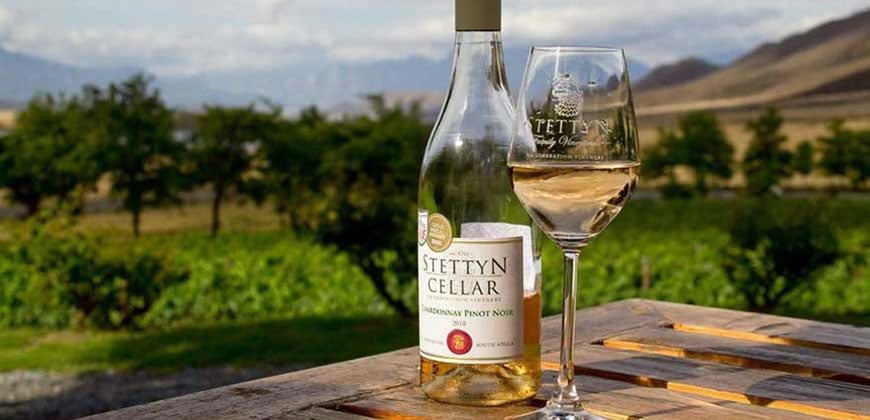
Tips for creating a cheese and wine pairing
You’re practically a pro at this point, but there are a few more things to consider when it comes to pairing wine and cheese.
- Serve cheese at room temperature:
Take it out of the fridge at least 30 minutes before serving. - Plan the order of your tasting:
Start with lighter wines and fresher cheeses and then work your way towards heavier wines and more mature or pungent cheeses. - Tasting technique:
Taste the wine by itself first, then cut yourself a piece of cheese and have a drink of the wine with the cheese. Your taste buds will tell you if the pairing works, or if the match is unsuccessful. - Keep a palate cleanser on hand to refresh your palate between pairings – crackers work well for this.

Practice your wine and cheese pairing
The best way to learn which types of cheese and wine pairings work well is to get experience. You can practice at home using the tips and combinations we have given you above, but you can also go for cheese and wine pairings at wine farms or restaurants.
If you are looking for great wines for your cheese and wine pairing, you can shop Stettyn Wines online and find a range of delicious (and award-winning) white, red, and sparkling wines!

